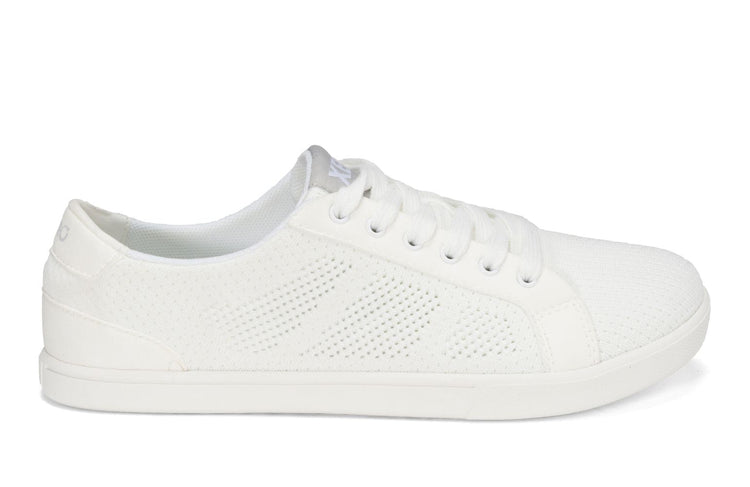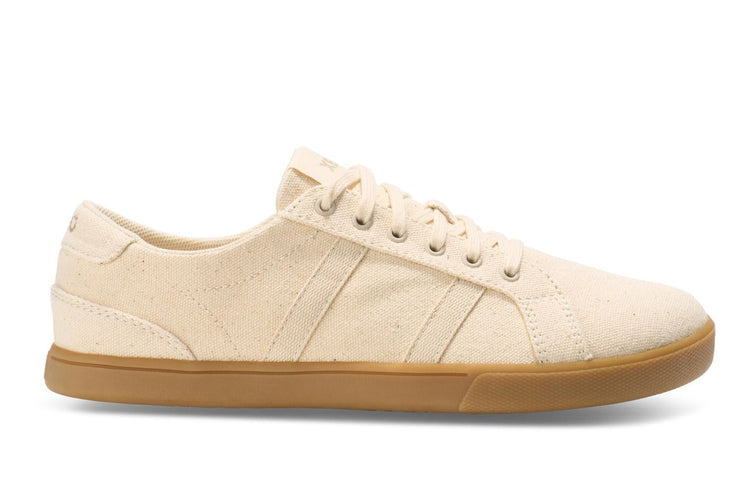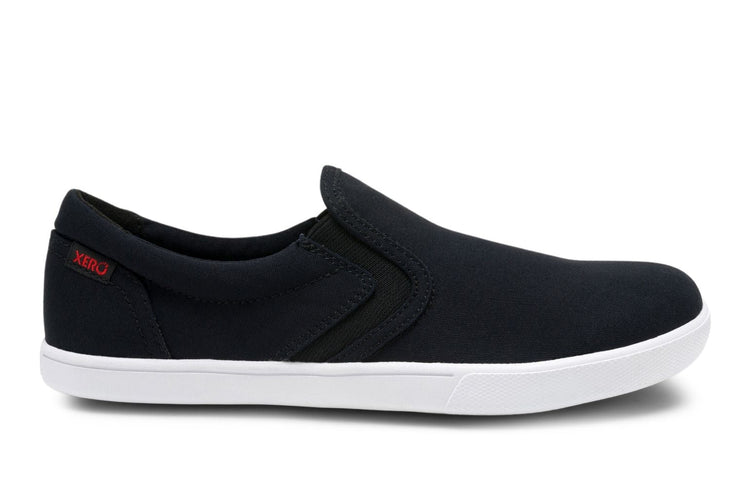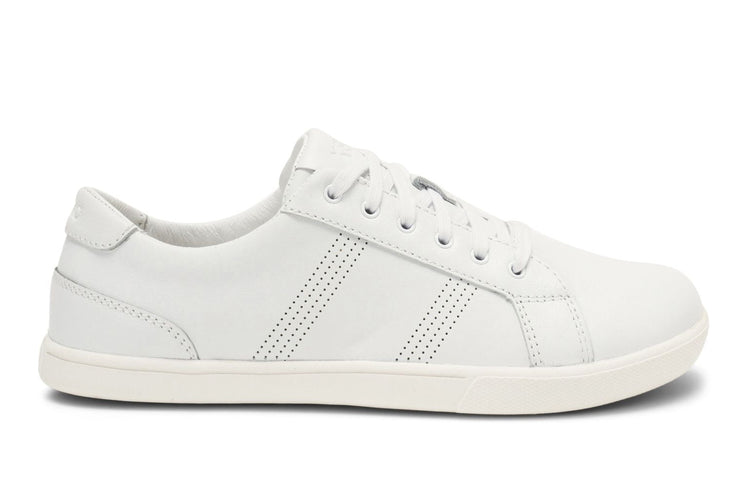New Research - Minimalist Shoes Improves Balance and Strength in Kids
latest News
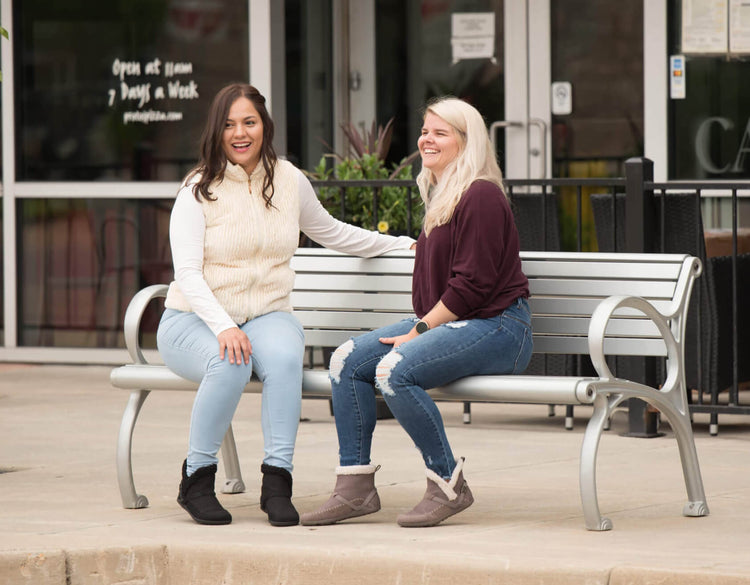
Xero Shoes' Top 3 Minimal Boots for Cool Weather
Cooler weather is finally here and it’s time to swap out your sandals for comfy, warm boots. Instead of turning to clunky boots that are hard to pack for fall travel or office wardrobe changes, or boots that pinch your toes together, consider Xero Shoes’ barefoot-inspired casual boots. Our boots are designed with a wide toe box and minimal sole, allowing your feet to move, bend, and flex naturally. Who says you can’t FEEL like you’re barefoot after the summertime? Research shows that just walking in minimalist shoes strengthens foot muscles as much as doing a foot-strengthening exercise program. If you struggle with plantar fasciitis, bunions, or just uncomfortable feet, Xero Shoes’ lightweight, comfortable fall boots are a great pick! LEATHER BOOTS FOR LOOKING STYLISH Tari Women’s Leather Boot The Tari is a minimal Chelsea-style boot for all occasions, made with sartorial detail. The full-grain leather upper feels as smooth as it looks, and tonal instep goring makes for easy on and off. The adjustable heel wrap helps stabilize your foot, and the flexible and durable FeelTrue® sole is lightweight at just 9.6 ounces each (W7). MEN'S HEMP STYLISH BOOT Denver Hemp Boot When there’s a chill in the air, you’ll love the comfort, style, and natural, barefoot feel of the Denver. This stylish ankle-high minimalist hemp boot offers a water-repellent canvas, cozy flannel lining and a heat-reflecting warming insole. And at only 12 ounces each for a men’s 9, you might stroll your way through the entire winter and forget you even have them on. Plus, be on the lookout for a MAJOR upgrade to our Denver later this Fall. YOUR MOST COMFORTABLE LACE-UP MID-HEIGHT BOOTS Mika Women’s Mid-Height Boot The Mika is a lightweight, lace-up hemp women’s mid-height boot that looks great dressed up or dressed down. This flexible, minimal mid-height boot features water-repellant canvas, perfect for the varying weather patterns in fall and winter. Stay warm thanks to a cozy flannel lining and stylish 70/30 poly/wool blend collar, and a heat-reflecting warming insole. Plus the lugged sole grips wet surfaces easily. WARMEST BOOTS FOR SNOW Alpine Snow Boot The Alpine is a snow-friendly, waterproof, lightweight insulated boot. Whether you’re snowshoeing or relaxing apres ski, this snow boot keeps your feet warm. We designed this minimal snow boot with polyester insulation, a heat-reflective insole, and a fully seam-sealed lining.

New Research - Minimalist Shoes Improves Balance and Strength in Kids
I've said this before, and I'm going to say it again. It seems silly that in the natural movement and minimalist footwear world we need to prove something as obvious as "use it or lose it." Using your feet means letting them bend, flex, move and feel. "Losing" them means not letting them do those things.So when new research comes out (getting to that in a moment) that's all about use it or lose it, I can’t help but call it, ironically, “stupid research”. Stupid, because, do we really have to prove something as obvious as stupid as use it or lose it?This new research is from the University of Sydney, led by Dr. Shayan Quinlan. It discusses how shoes that allow for natural movement give children stronger feet with better muscle structure, and improve their balance as they grow. We can imagine this would also apply to adults. I have some more to say about the research in this video, below.There’s also an excerpt from an article on the study I think you’ll find particularly interesting…"Based on the study results the researchers recommend parents and carers look for a flexible shoe using the following pointers to identify the difference between available products.– Weight: the lighter the shoe, the better– Flexibility: ensure there is movement when you hold the toe and heel and rotate them in opposite directions and also try folding the shoe in on itself from toe to heel– Structure: the smaller the height difference from the heel to under the ball of the foot the better"While this research wasn't done for Xero Shoes, we can expect this would apply to them as well, since Xero Shoes check these boxes.You can find the study here and the article here, both by the University of Sydney.What’s your take? Comment below.

Xero Shoes Partners with Dignity Restoring Hope
There's nothing worse than leaving your beloved home in pure fright. Through the Dignity Restoring Hope foundation, we were able to connect with Iryna and her young family of Ukrainian refugees.Introduce yourself, what is your name and how old are you? “My name is Iryna and I’m 30 years old.”Where are you from? “I'm from Kyiv.”What were you doing in Ukraine? “At that moment I was on maternity leave, we have 4 kids, and the youngest was 2 years old, right now he is 3 already.”Is all your family here in the Czech Republic? “Right now we come back to Kyiv. But later we are planning to go back to Prague. Right at this moment, my son has an operation on his leg. There are things we need to take care of and then we are arranging our return back to the Czech Republic.”Why have you decided to go to the Czech Republic, was it a deliberate choice? “It wasn’t a choice. That was all unexpected. We didn’t know where are we going and what to do, complete misunderstanding. But at that moment I was studying online and my classmate, who lives in Prague, called me on the 24th of February and invited us to come to her and offered to help. We were driving through different cities and finally decided to go to Prague. We wanted to stay for one week and see how the situation is going to change, to realize what is going on. We stayed for one month without registration, every day hoping that will end today, but there was no end in sight. Finally, after a month registered and got a visa for temporary residence”Were you leaving Kyiv the day it started? “Yes, we awoke by the sounds of the explosions. Packed some things in a suitcase, woke the children, jumped in the car, and went nowhere”What is the current situation in Kyiv? “The last days were quite tough. The air–raid alarms went off very often. Thank God, there were no explosions. A few days, after we came to the Czech Republic, we were watching the explosions from our window. This is scary, painful, and displeasing. But the days following all of Ukraine suffered from bombs. It is an intense situation, this is war.”How does your children react to a civil defense siren? “We were talking about that a lot, I was showing him a cartoon about the air–raid alarm. It is our friend, it notifies us about the threat of an attack and helps us. So now they are absolutely fine about it, say “Hi, alarm and thank you” because in the cartoon it is said to greet it and make your way to the shelter. They don’t have a fear. It is scary that they play games that you have to hide somewhere in the bunker, the flying shells. Luckily they didn’t see much of it but they know and understand everything from the information filed“Have you been to Europe before, to the Czech Republic? “ Yes, we were traveling before. More with the first kid. Then my daughter was born. And then we had another two kids, one year apart. With the oldest, we've been in the Czech Republic and Portugal. We've been traveling to Spain and Paris, but with one kid it was easier..”When you were traveling, have you ever thought about leaving Ukraine, to emigrate? “We had these thoughts when we were young, we were playing for a Green Card, but that was before we delivered our first baby. No action was taken for that. We had an idea to live somewhere for one winter, or 3 months, temporarily, this is interesting and changes your daily routine for a while. But apparently, once the war started, you realize that the only place you want to be is home.”Security is way more important, especially with the kids. “It is also about the choice. When you are choosing to leave. It is a conscious decision, your personal choice that is comfortable at this stage. But this is a totally different thing when you are running. First days we had a fear that we did something wrong, our actions can be against the law of this country. In Budapest, our money was stolen from our pockets. We were scared and lost anywhere.”Have you received help with documents here in the Czech Republic, people were willing to help? “We were waiting for a long time without registration and believed that it would end quickly. So after one month from the beginning, when we finally came there, everything was easy and fast. I've heard the stories before about how people were waiting all day, coming early in the morning to stand in line. But for us it was a very positive experience, people were nice, with open hearts, and did everything for us.”Was there a kind of negative situation, for example at kids' play yards, is there a difference in people's behavior, compared to the first weeks? “We had a negative experience on our way to the bank, the guy on the street was really aggressive and he was screaming that you are fascists. He was with a huge dog. I went to the bank and my husband stay in the car, and the stranger continued yelling. But my husband didn’t react to that, so he left. It is a catchy negative experience on the street that happened to us. We were spending almost all of the time in the play yards, and closer to summer more people from Ukraine came. Little conflicts I usually had with Ukrainian people, rather than with Czech. We went to the shopping mall, and there was a carousel with 3 horses. I was on the phone and didn’t get the whole situation. The lady put her daughter on it and turned it on, two of my kids saw it moving and also jumped on. The lady starts screaming this is only for her kid. Obviously, I took my kids off it. But the Czech moms act differently, they always say, common join, there are free spots, your kids can have a ride with mine. On the other hand, it is the difference in their attitude to their own things. When I come to the play yard, I simply pour out all the toys in the middle of the band, I don’t care who will take them, my kids share everything with the others. But when they tried to take a balance bike, the lady strictly notified me, that this is forbidden. We had a lot of different bikes and cars in Ukraine, and we were sharing them with everyone around, but we didn’t buy one in Prague, every day thinking that tomorrow we will go back home. But my kids are used to sharing and surprised that they can't take it. At the same time, i think this different attitude and vision might be right.”In general, do you like staying in the Czech Republic, and how long you are planning to be here? “By the end of the war, we really want to go home. This is not that the Czech Republic or Europe is bad, but we want to go home. We have a house here, I hope it will survive. We are here now, and you can’t imagine how much we were missing our city. We used to solve medical questions immediately, with stomatologists for example. My husband had a stomach ache and they offered an appointment three months later, or the nearest in another city in one month. We could manage this situation and we know that in Ukraine you can get the appointment on the same day. We love Kyiv. I believe our win is close. And we will all come back home”When are you planning to return back to Prague? Right now we have an operation for one kid, one of our kids is adopted, and we need to do a medical check for him, he has a condition of late growth, he is one year behind, and during the last year, we were working on this question a lot. He was in a hospital for a while, now he has a blood test. By the end of the week, we will have answers from doctors and in the middle of August, we are planning to come back to Prague. But it is not easy to find a place in Prague, we don’t want to go nowhere, firstly we will find a place to live, and then go.”Do you have relatives in Ukraine? All our relatives stayed in Ukraine. My husband's parents are from Mykolaiv. My h and my husband, we used to live there for a while. And every day you are reading from the news: bombed hotel - my cosmetologist was working here, an explosion in the city mall - I used to work here, destroyed university - my husband got an education there. That's terrible. The current situation in this city is a nightmare. Bombs every day, and for almost two months they don’t have drinking water. Two months ago they went to my mother in the Odesa region, and later, when we came to Kyiv, they came to us. This is horror. We are all together now, and i§m so happy, you never know, when is the last time we can see each other, and how long we won§t meet. For me, the importance of life and visions has changed a lot.”In general how much your life has changed? Do you feel safe, the ground disappeared below you, or points are a fulcrum? “On the first day, everything collapsed, utterly unknown. Early in the morning, it was still dark, we heard the sounds, I started throwing clothes into the suitcase, I caught myself thinking “for how long I packed, for a few days, or ф few weeks, or months, will I ever come back here, will my home survive will my home not be destroyed, will I have a place to come back.” The first month was the hardest. But after I went back to study. My academy is in Moscow, but I took a decision to quit it, even I was studying for 1,5 years, and left only one module and diploma, I couldn’t continue it. So I found another school, and after one month went back to study, it is really helpful and distracting. Housekeeping, studying, and taking care of kids there is no time for depression. I’m more flexible now and adjusting to changes is way easier. Sometimes you are at your emotional bottom. The last few week's news is full of stories from Mykolaiv and Vinnytsia. You are reading and feel like you are dying with these people. I allow myself this emotion, this is grief, this is pain from loss, but we are moving on. I have a motivation for myself to become better. They are trying to destroy us, but they can’t, instead of hatting them, I put my anger in the right direction I will grow, I will use this energy for self-development, we will be better, and we and our state become more beautiful. I will be a better person, opposite to them.”If you would like to donate directly to Dignity Restoring Hope, we encourage you to do so below. Donate To Dignity Restoring Hope Looking for more ways to help? We have put together a list of great foundations that are accepting donations for those in need.1. International Humanitarian Fund2. Children of Heroes 3. Fond Masha4. Voice of Children5. People in Need6. Unicef7. Doctors Without Borders

Family of 7 Treks the CDT in Xero Shoes
Imagine this: trekking the Continental Divide Trail which is over 3100 miles, or almost 5000 kilometers, with FIVE KIDS and a newborn baby! The Netteburg Family is making their way along the CDT, and we are lucky enough to sponsor them in Xero Shoes the entire way. In 2020, the Netteburg Family trekked the Appalachian Trail and their daughter, trail name “The Beast,” became the youngest person to ever trek the entire trail on her own two legs, at age four. Her older siblings, Lyol (was age 11, “Blaze”), Zane (was age 8-9, “Boomerang”), and Addison (was 6-7, “Angel Wings”) also trekked without difficulty. They spent a total of 177 days on trail. If they successfully complete the CDT in 2022, “The Beast” will become the youngest to trek the trail at age six, and oh yeah, since the AT they have added another little addition to the family. So now with five kids, they will possibly be the largest family to complete the trail and the first to carry a baby the length of the trail (which has been done many times successfully on AT and PCT.) It’s been amazing watching their journey unfold through social media, and we got an update from the Netteburg Family at about 600 miles into the CDT: “Our Xero Shoes are holding up amazingly well, considering they are ultralight minimalist shoes and the abuse we are putting them under. Most trail runner shoes long-distance thru-hikers use end up beat up by 400-500 miles and these are surprisingly resilient. Also, we’re so pleased with how the zero drop and the minimalist design makes us more intentional when walking.” We weren’t lying when we told you about the 5,000 mile sole warranty. No matter what kind of abuse you are putting Xero Shoes through; they can handle it. When you’re hiking a long distance such as the CDT it’s not only important to have lightweight shoes on your feet, but also to pack lightweight. The Netteburg Family was smart enough to bring Xero Sandals with them as well. Here is what they had to say about their sandals: “The sandals are so comfy and handy around camp and around town. Much better than clunky crocs or flip flops. Xero sandals mean we can still wear socks around camp. Feet don’t freeze and feet are protected. The truth, however, is the boots are so comfortable, we hardly ever use our sandals around camp. Really only when we’re in towns.” Needless to say, Xero Shoes are so comfortable you just may never want to take them off. As we cheer on the Netteburg family throughout their ground-breaking journey, it is humbling to see how our shoes can help this family achieve their goals. After walking over 1000 miles in the DayLite Hikers, and the kids walking over 700 miles in the Prios it’s clear that our shoes are quality products that truly last. We’ll leave it off with sweet words from the Nettebur Family: “We love having a company that supports families getting outside and into the wild. From the youngest hiker to the parents, we are all happy with our minimalist shoes. They have held up amazingly well. This is our second long trail, so our family has definitely been through some shoes. Xero Shoes hold up every bit as well as heavier traditional hiking shoes.”
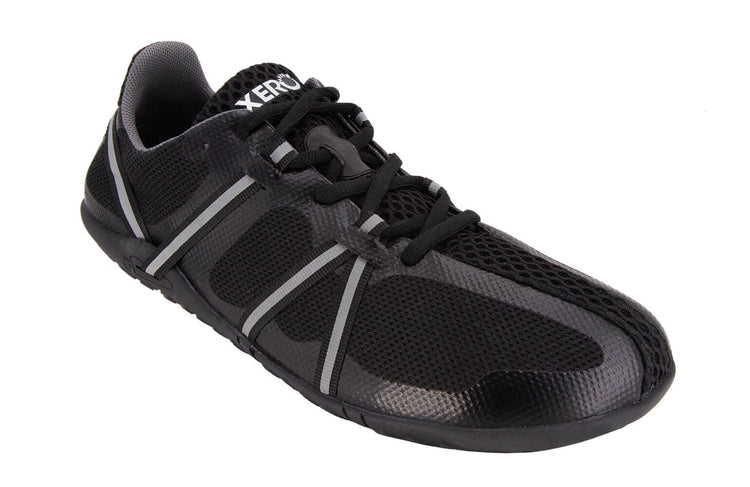
BOSU Ball creator's favorite Xero Shoe?
David Weck, developed the BOSU ball and is all about helping people maximize their health and performance. What shoe does David, and his team at weckmethod.com wear? Check out the video, below, for the answer to that question plus his great (and FAST) advice on how to make the transition from a "normal" shoe to a minimalist, lightweight shoe that lets your feet do what's natural.
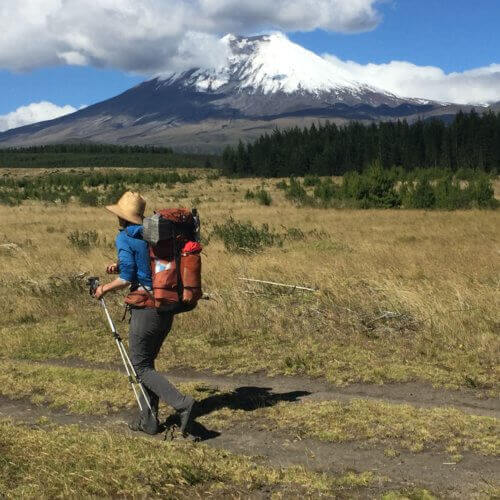
Foot Care for Endurance Athletes
“And forget not that the earth delights to feel your bare feet.” Khalil Gibran Of the 206 bones in your body, 52 are in your feet. Each and every one contributes to getting you to where you are going and is a potential major hindrance if not cared for. As a long distance, long term athlete, I spend a lot of time on my feet. Over the last 7 years I have hiked 12,000 miles, paddled 1,500 miles, and bikepacked 4,000 miles. With 3,500 miles left to complete a non-motorized traverse of the Americas, physical maintenance, and specifically foot care, is crucial. One of the important lessons I’ve learned has been moderation. It sounds silly putting those two thoughts into the same sentence but it is a fundamental truth to how I’ve been able to keep going for so long. Maintaining a pace and stride which works for me, resting when my body needs it, and giving it the resources it needs to stay healthy and moving are all examples of moderation and care which I began learning when I started thru-hiking over a decade ago. And which I continue to learn and relearn when my body makes her demands known or insists in the form of months of illness, repeated bouts of overuse injuries, or other physical break down. Interestingly, these sorts of issues don’t usually spring upon you all at once. There are signs, symptoms. That tweak in your lower back. Is that a one time thing or is that the beginnings of chronic pain? Every endurance athlete knows this fear and the fact is, you never can know which it is going to be. What you can do is incorporate a steady practice of care and strength building to give your body its best chance. Similarly, there are dozens of small things you can do to prevent going down that road, or to aid in recovery as you regain strength and stamina. These are a few of those small practices which can make a big difference Dry Your Feet I spent the first 3 years of my backpacking career battling with trench foot. I came to think it was simply part of the experience. I tried doubling up on socks, traded my way up into Gortex boots and the issue only worsened. When wearing shoes and socks, your feet are experiencing a very different climate than the rest of your body. Usually it is a warm, damp environment, just the sort of place fungus like to grow. I was super glueing deep cracks in my heel shut. Until finally one day I swung in the opposite direction and wore lighter shoes and began airing my feet out more often. I quit sleeping in socks and the issue subsided. If you go barefoot or wear open sandals, your feet will be able to dry naturally. Still, if you are on a multi-day trip, rinse or wipe your feet off at the end of the day, paying special attention to the areas between your toes. Not only will this keep your quilt or sleeping bag cleaner, but it will also keep your foot skin healthier. When you are in a closed shoes sort of environment giving your feet time to air out whenever possible. Whether that is under your desk at work, on a lunch break along the trail, or the drive home from the trailhead, keeping your feet clean and exposed to the open air contributes significantly to your foot health. Mix it Up Cross-training caught on in the endurance sport world over the past 20 years. All our muscle groups were made to work together so having one set particularly overdeveloped while others languish, doesn’t serve the sustained health of our physical systems in the long run. The same goes for our feet. While thru-hiking the CDT this past summer, I was retraining my feet after several months spent exclusively in my Xero sandals on sandy beaches and in a kayak. Due to constant high mile days, the weight on my back, and the terrain, I opted to hike in trail runners with more padding and zero drop and quickly began to have arch pain. Thus I began alternating between my sandals and trail runners throughout the day. Once the frosty mornings were past and when I took a breakfast break and aired out my feet, I would switch into my sandals for a few hours until lunch. At big river crossings, on smooth trail, and around camp, I was in my sandals. On thorny bushwhacks, across lava rock, and other rough environments, or at the end of the day when I was tired and not able to be as careful with my step, I would switch back into my trail runners. This switching back and forth made me very aware of my gait which is helpful because a hyper-extended gait is a leading cause of shin splints. While the cushion of the trail runners invited this sort of step, my Xeros reminded me not to fall into that. Thus, if like me, you aren’t ready to spend 100% of your time barefoot, there are still many ways and a lot of space for barefoot practices to improve your awareness of how you move, and your experience of both your body and the outdoors. Thank Your Feet Now, here I may get a bit hoakey for some folks, and I don’t mind if you skip on to the end, but at the end of a long and challenging day, I like to thank my feet. I leave my shoes at the vestibule, peel off my socks, and either soak my feet in a nearby stream or give them a good wipe down with a baby wipe. Then, sitting in the butterfly position or lying on my back in a modified happy baby pose, I wrap my hands around my feet and begin to stretch. Beginning just above my ankle bone I rub small circles and check in with all those tiny bones. With the texture of my skin. With the cracks in my skin. I thank them for the miles they have put in. Marvel at the ground they have covered and conditions they have weathered. Doing this I work my way all the way down the tops of my feet and then begin again at the ankles and cup my heel. In thru-hiking, that part of the foot takes a lot of heavy strikes and a lot of modern footwear encourages this, so they get an extra thank you for taking that extra whooping. Focusing on the soles of my feet and paying particular attention to both arches, I make my way to the toes. Stretching each toe individually and then tugging outward from the tip, pulling them long and a good final stretch before crawling into my sleeping bag and asking my body to do it all over again tomorrow. Endurance athletes ask a lot of our bodies but every thru-hike, ultra, or even just a junt around the block starts with one small step. The same measured moderation and care applies to foot care. Taking a few minutes out of your day or tacking a few extra on to your training routine may be hard to convince yourself of when you are trying to make miles or balance a busy lifestyle. Whether it is washing and airing out your feet, switching out shoes, or staying awake a few minutes longer in your tent to stretch your soles, small steps can make the biggest difference in the long run. After all, your feet are carrying the most weight on your body, giving them a few minutes of dedicated care is the least you can do. –Adventurer Bethany Hughes The content of this post does not constitute and is not intended to be a substitute for professional medical advice, diagnosis or treatment. Always seek the advice of a physician or other qualified health provider with any questions or concerns you may have about your health or a medical condition.
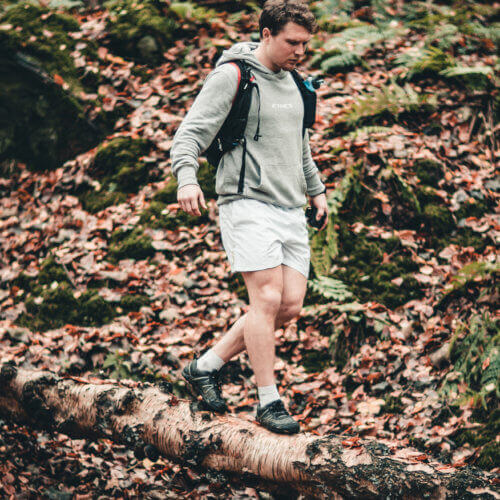
Hiking for Health
Want to improve your health AND have fun? Take a hike! Hiking has significant health benefits. Here are just 5: Hiking on rugged trail surfaces is a natural way to engage your core muscles, Burn calories -- Hiking on uneven terrain increases the amount of energy used by your body by 28 percent compared to walking on flat ground, Get strong -- Hiking helps to strengthen often neglected muscles in your hips, knees, ankles, and feet to improve balance and stability, Hiking is good for your brain: research shows that time spent in natural environments engages all five senses and calms brain activity, Instant meditation -- just being out in mother nature reduces your mind’s tendency to get stuck on negative, self-focused thought patterns – resulting in a happier, healthier you! So, go on a hike! Your body and mind will thank you. The content of this post does not constitute and is not intended to be a substitute for professional medical advice, diagnosis or treatment. Always seek the advice of a physician or other qualified health provider with any questions or concerns you may have about your health or a medical condition.
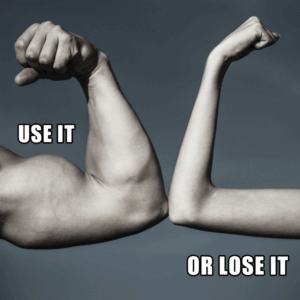
Wearing Xero Shoes can build foot strength
A study by a team led by Drs. Sarah Ridge and Marc Olsen showed that merely walking in minimalist shoes built foot muscle strength as much as doing a foot strengthening exercise program.That study didn't use Xero Shoes, but Dr. Ridge says that wearing Xero Shoes should give the same benefit as the ones used in the study.This shouldn't be a surprise.We know the "use it or lose it" principle.When it comes to bodies -- "using it" can build strength. Not using it can reduce strength, can make you "lose it."Let's dive into "losing it" for a second:Think about what happens if you put your arm in a cast, immobilizing the elbow joint so the muscles around it don't get used.What happens when you remove the cast after a few weeks?The arm muscles have atrophied. You've "lost it."Well, we think the same thing happens if you're wearing a shoe that doesn't let the many joints in your feet move, and get used, naturally.In fact, a study by Katrina Protopapas showed exactly that. "Supporting" the foot's arch by adding arch supporting insoles reduced foot muscle size by as much as 17% in just 12 weeks.If you've been wearing a shoe that inhibits natural motion, it's like putting your foot in a cast. Losing it.Again, it should't be a shock that if you've weakened your feet in "normal" shoes -- with or without an orthotic -- going back to USING your feet in footwear that lets them bend, flex, and move naturally, can build strength.And that's what Dr. Ridge's study shows.We can't think of a time where weaker is better than stronger.That's why we can't wait to hear your "using it" story when you wear Xero Shoes.
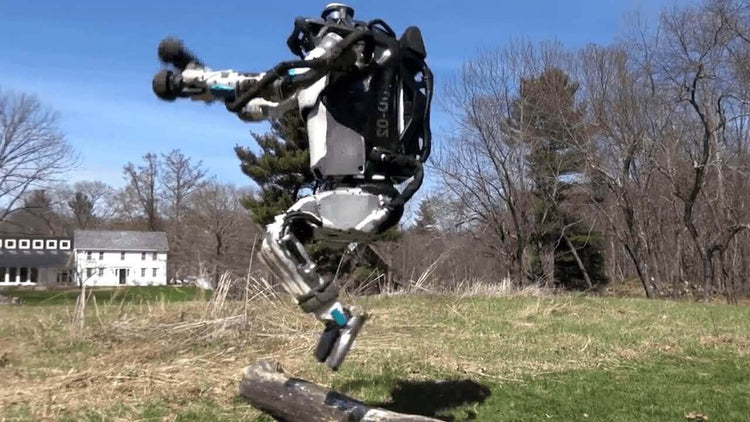
Running Form - learning from robots, kids, and ice
Physics. It's not just a good idea, it's the law.Want to improve your running technique?I have three suggestions: Watch robots run Watch little kids run Learn to run on ice! Running RobotsThe gang at Boston Dynamics are creating robots that do AMAZING things. For one, check out this one:Oh, sure, it's not going to win any races, but what do you notice about its running form?Look at where the foot lands in relation to the body.Is it reaching out in front of the body ("overstriding")? Nope.It's landing, basically, with the foot under the center of mass.This is the most important thing to emulate.You may also notice that this robot contacts the ground with its forefoot first. It doesn't land heel-first. It doesn't land flat footed.Research from Harvard's Dr. Irene Davis suggests that this is the optimal way for humans to land also. Why? Because you're putting the foot and ankle in the optimal position to give you strength, structure, and shock absorption.You know who else runs like this?KIDS!Especially kids who haven't spent much (or any) time in shoes.Take a look at this video. Especially the youngest, littlest kids at the back. Not every stride is perfect (nor should it be... they are, after all, on a non-flat surface), but you'll see that they're landing much like the way the robot does.Forefoot first. Foot under their center of mass.And, perhaps more importantly, it looks like they're having FUN!I also love when the littlest one stops for a few moments because he's "done," then starts again when he's ready to go.Running on Ice!I'm often asked how to run/walk/hike without slipping.Actually, what I'm asked is "Can you make a shoe or sandal that's totally slip resistant?"In short, No.Like I said at the start of this post: Physics is the law.There is no material that can prevent slipping under all conditions.Even the materials that help have limitations and trade-offs. For example, typically, the grippier the sole, the faster it wears out.But you can prevent slipping almost regardless of the sole's composition, or even the surface you're on.How?By doing the same thing that robots and little kids do: Land with your foot UNDER your center of mass (or as close as you can get).One demonstration of this is running on ice.Check out these two videos:In the first video, the runner builds to his full speed on carpet, then holds that speed on ice. In the second, the runner is even able to build speed with proper foot placement.This works because landing with your foot under your body reduces horizontal forces enough to eliminate slipping.A word about slipping in sandalsSometimes people will tell me that their sandal doesn't slip, but their foot slips across the sandal.This is caused by the same issue -- landing with your foot too far away from your body.In that case, the sandal hits the ground and stops while your foot is continuing to move.Landing with your foot under your body, like our kids, robots, and ice-runners, will take care of this, too. Let me know what you discover as you become a child-like robot on ice!
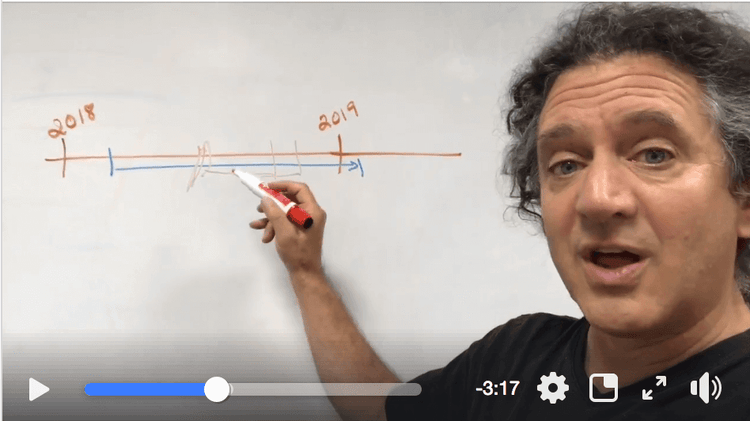
Can't Find the Size, Color, or Style You Want? Here's why...
We know that some people are upset because we may not have the size, or color, or style of the Xero Shoe that they want. Huge apologies. Clearly, it's not our intention to run out of inventory and be unable to replace it in a timely manner. It's happening for a few reasons, that I describe in this video: Before I jump into the details, I'll let you know we have more Prio and TerraFlex on the way. We don't yet have a firm date for their arrival though. Okay, so why can't you always get the Xero Shoes you want? In short, the biggest cause is how fast we're growing! When we bring in a new product, or even bring in more of an existing product, we're basically guessing how well it's going to sell. No company has ever gotten this formula perfect. If they did, there would be no TJ Maxx or Ross or Marshall's or any of the other overstock and closeout stores. But this is especially challenging for a new and rapidly-growing company like ours. When we're wrong -- when demand is WAY greater than we expected -- the issue morphs to one of timing and minimums. When it comes to timing, it can take 90-120 days or more from the moment we place an order for product until it arrives in our warehouse (and that's assuming there's not a strike at the port, or that our container didn't fall off the ship mid-ocean, or any other crazy scenario). Thinking about our Genesis sandal -- it sold 4x faster than we expected. If we ordered more now, we wouldn't get that shipment until winter. Not the best time to get a ton of sandals in the warehouse. Holding onto that inventory until sandal season picks up again creates a serious cash flow issue. So, for that product, we can't responsibly bring in more until 2020. Then, there are the minimums. We can't simply call our factory and ask for a couple hundred pairs to fill in for a size or color that we've run out of. The minimum number of pairs we can order is in the thousands. The problem this creates relates back to timing. That is, if that minimum is, say 8 months' worth of inventory, but we were planning to to update the product in 5 months -- by launching a new color, or making some tweaks to improve the product -- then we'd be sitting on 3 months' worth of product that we might not be able to sell. Again, a company our size, bootstrapped by me and Lena, without venture capital funding, can be sunk by that kind of situation. And we want this ship to keep sailing. I hope you're starting to understand the complicated calculus of managing inventory. It's what keeps Lena and I up at night. We know that when we outgrow this "awkward teenage" phase of our business, problems like this will become less likely. And we hope that the new products we bring in will excite you enough to make the memories of out-of-stock issues fade into the background (get yours before they sell out! ;-) ). To hear about when we get "fill-in" inventory, make sure you've joined our newsletter list (see the bottom of this page) or joined the Xero Circle (top right in the navigation section of the page). As always, Lena and I greatly appreciate your support and hope that you stick with us through our growing pains. Make sure you've joined the Xero Circle (which, among other things, gets our newsletter into your e-hands) to hear about when we get more (and NEW) inventory. Click the link in the menu at the top-right of this page.

Leg Length Difference and Barefoot Running
Can you run barefoot if your legs are different lengths?This is a question I get at least once a week. And I think the answer may be surprising.Watch this video that I made with Joshua Gordon about barefoot running technique and leg length issues (and a LOT more). Then leave a comment below with your thoughts.EnjoyThe content of this post does not constitute and is not intended to be a substitute for professional medical advice, diagnosis or treatment. Always seek the advice of a physician or other qualified health provider with any questions or concerns you may have about your health or a medical condition.
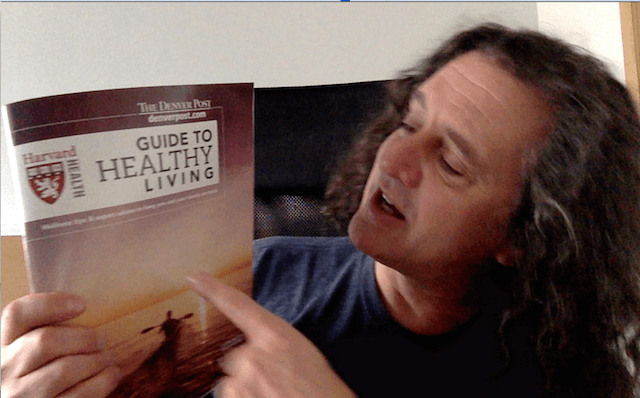
Harvard's Guide to Healthy Feet - Are you doing what they say?
Our local newspaper, the Denver Post included an insert, The Harvard Health Guide to Healthy Living. Lots of great info in there, but my favorite is the section, Keeping Your Feet Healthy. What does it recommend? Check out this video for a few highlights and my commentary. And if you want to read the transcript instead of watching, it's below the video. What do you think? Are you doing what Harvard recommends? Add your comments, below. Download the article here Transcript Hi, Steven Sashen here from xeroshoes.com to talk about something that I got in the newspaper as an insert the other week. It is the Harvard Health Guide to Healthy Living. There's a lot of great information in here but there's one section that I really want to talk about, and let's take a look at that, shall we? It's the "Guide to Keeping Your Feet Healthy." Now, in this guide to keeping your feet healthy, there are a couple of highlights that I really want to point out and here's the first one. Read down here under Foot Fitness, “Exercising your feet on a regular basis not only improves overall foot health but may reduce your risk for injury,” and here's the highlighted part, “Walking is the best overall foot exercise. When you walk, you put your foot through its full range of motion from the time your heel hits the ground until you lift off with your toes.” Okay, first of all, love the idea of putting your foot through its full range of motion, love the idea of walking, have a big issue with that phrase “heel hits the ground.” You don’t want your heel to hit the ground. You want your heel to contact the ground. You want to use your foot. You want your heel to touch the ground but you don’t want it slamming down. So what you end up wanting to do, what you actually want to do, is have your foot land kind of underneath your body rather than way out in front of your body. If you reach way out with your foot, you'll slam your heel into the ground and that'll cause what’s called an impact transient force spike through all of your joints. What you want to do instead is let your foot land underneath you. You may be a little flatfooted, you may land on your midfoot, you might even land on your forefoot – suffice it to say, you don’t want to slam your heel. You don’t want to hit your heel. You want your heel to contact the ground naturally. Now, the next part, “letting your foot go through its full range of motion.” In order for your foot to go through its full range of motion, you need a shoe that lets your foot go through its full range of motion. If you have a stiff shoe with a really high heel, it can't go through its full range of motion. With a high heel, your heel’s already way up and you don’t get that plantar flexion. You don’t get that toe coming towards your knee that is part of the full range of motion in your ankle. And if the shoe itself is stiff, your foot can't move properly. You have one-quarter of the bones and joints of your entire body in your foot and ankle and you want to have a shoe flexible enough to take advantage of that. So for example, our Xero Shoes. This is our Xero Shoes Prio. It is a running fitness shoe. People use this for road-running, trail-running, CrossFit, yoga, gym-going, pretty much anything you can think of. Of course, casual wear as well. And when it comes to not elevating your heel so that you can get that full range of motion and the plantar flexion—you can see the heel is not elevated—when it comes to letting your foot bend, move and flex naturally, well, let's just do this. Yeah, that'll do it. And that amount of flexibility is not unique to our Prio. All Xero Shoes do that. This is our Z-Trail sandal. Think Chaco, Teva, Keen, but this thing weighs one-quarter as much and is much, much thinner and, as you can see, does that same crazy flexible rolling thing that lets your foot move through its full range of motion. Even our casual shoes—this is our Hana men’s casual canvas shoe—same thing, just as flexible as all Xero Shoes because natural foot motion is so important to us. Thank you, Harvard, for telling everyone else that it's important for them as well. Alright, let's go into the next point: “Basic steps to help prevent many foot problems – buy shoes that fit well with low heels and plenty of room for your toes.” Well, I already talked about the low heel part. Not only are Xero Shoes a non-elevated zero-drop heel, but they're also non-elevated. This is a low-to-the-ground sole for balance and agility. You might hear about some shoes that are zero-drop—means they don’t elevate your heel, which messes with your posture—but they're still an inch, two inches off the ground. You don’t want that. You want something low to the ground for balance and agility. And when it comes to plenty of room for your toes, think about most of the shoes that you have that are pointy and squeeze your toes together – Xero Shoes, on the other hand, have a nice wide toe box so your toes can spread and relax and splay and move naturally. And again, true on our sandals, true on our casual shoes. It's one of the core principles we believe in, is natural fit, letting your toes bend, relax, flex, and splay naturally. Let's take a look at the last point: “Make sure your shoes provide enough support but allow your feet to breathe.” Okay, let's talk about support. Many people think they need arch support. "You must have arch support." You go to a doctor and he'll tell you, that if you have any problem, you need arch support. Well, what does support actually do? It actually stops your foot from moving. Go back to that putting your foot through its full range of motion. When you have something supporting your arch, it can't actually move through the full range of motion. More, think about the idea of support in general. You're keeping the foot from moving. You're basically putting it in a cast. Imagine putting your arm in a cast. When it comes out of the cast, it's not stronger, it's not healthy, it's not flexible. It's weak. It's atrophied. In fact, there is a company that had a trade show booth next to us. They made insoles for your shoes and they had a drawing of a bare foot and then a drawing of a bare foot with their insole thing, and it said “37% less stress, instantly!” And I said, “By stress, are you measuring muscle activation with an EMG, an electromyograph?” And they said, “Well, yes,” very proudly. And I said, “So what you're saying is, the moment I step on that insole of yours my muscles are working 40% less, so I'm getting almost 40% weaker just by standing on that insole. Wouldn't it be better if I had 100% less stress by putting my foot in a cast or a foot coffin and never moving it at all?” and they did not have a good answer for that. An arch — think about it — architecturally, it is the strongest structure there is. You can put enormous amounts of pressure on it from the top and it's totally stable. What makes an arch fall apart? Supporting it, pushing it up from the bottom, the whole thing falls apart. You don’t need arch support, 99.9% of people. You don’t need arch support. You need strong arches. Whether you have flat feet or high arches, strength is the important thing, not support. And the way you get strength? Let's go back to where it says walking is one of those best forms of exercises. Move your foot through the full range of motion. Running, too, as long as you can move your foot through its full range of motion. So that's my little rant about support. And let's talk about breathing. Breathing isn't just about having a breathable upper so that you can get air in there, which these have. It's just about letting your foot have the space to move. That's why “breathe” is in quotes. And again, nice wide toe box, nice and wide across the midstep as well, or the instep as well. So Xero Shoes are designed so that you get a great comfortable fit that lets your feet move naturally. So that's the basic thing I wanted to share with you. I want to thank Harvard for putting out the Harvard Guide to Health Living and for having people who are wonderfully smart and talk about actually using your feet naturally instead of binding them up in foot coffins and having them get weaker and weaker over time. If you have any questions, drop us a line or check out Xero Shoes at xeroshoes.com. And as we always love to say, Live Life Feet First" The content of this post does not constitute and is not intended to be a substitute for professional medical advice, diagnosis or treatment. Always seek the advice of a physician or other qualified health provider with any questions or concerns you may have about your health or a medical condition.





